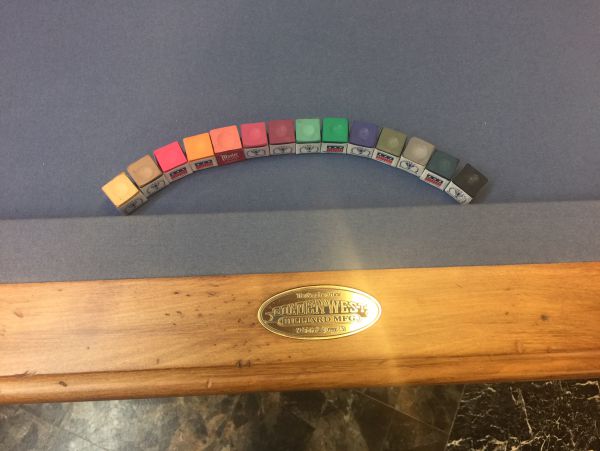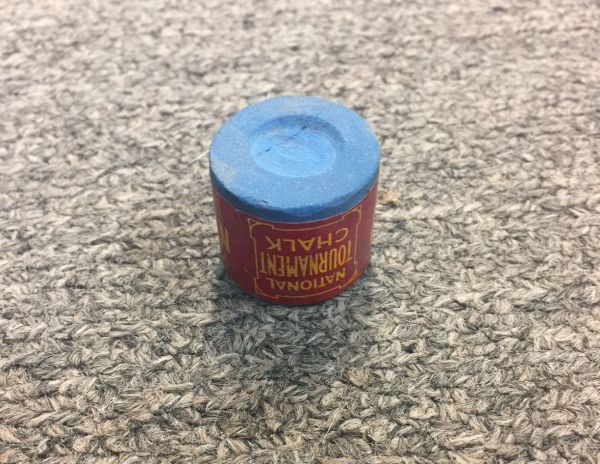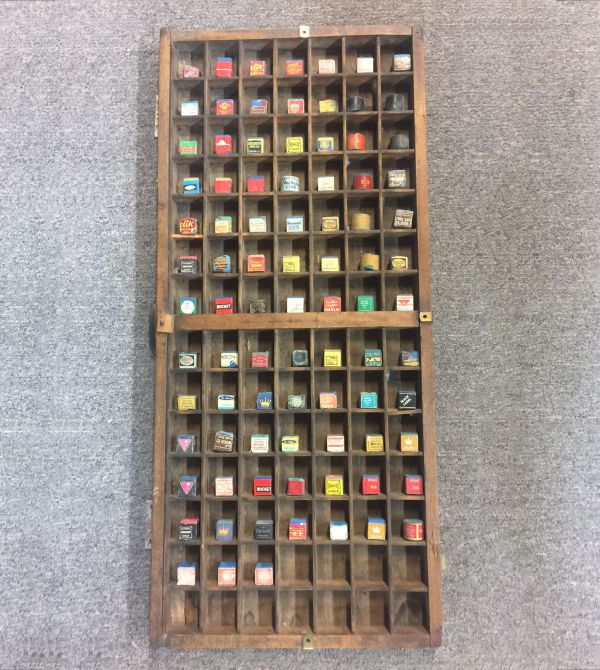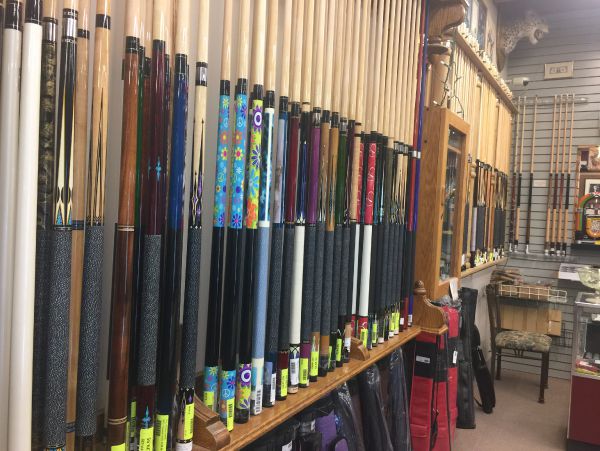
Looking at all the cue options provided on the market today it’s no surprise the whole ordeal can be stressful. That’s why we’ve provided some information on our most popular cue tips. Please be sure to come in for a friendly cue tip chat, be prepared to try different options and don’t forget to bring any question you may have!
Things To Keep in Mind:
-$15 installation plus the price of cue tip! Zan, Samui, and Kamui only $39.99 installed.
-Soft tip provide more ball control they also increase the ability for more english but they require more maintenance.
-Harder cue tips last longer and are good for breaking but aren’t always good for every shot.
Vegetable Tanned Leather:
Vegetable tanned leather is tanned using tanning and other ingredients found in vegetable matter, such as tree bark, wood, leaves, fruit and roots. The result in color depends on the mixture of ingredients and the color of the hide.
About Chrome Tanning:
Chrome tanned leather was created back in the mid 1800th century. The tanning is done with chromium sulfate and other chromium salts. Making it more supple and pliable than vegetable tanned leather. This process also aids with discoloration and shape loss.
Standard Leather Tips
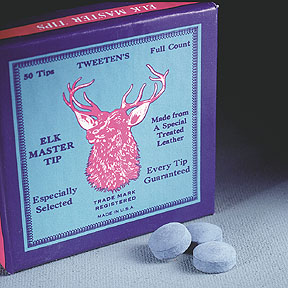
*Elk Master Tips: Are constructed from pressed mineral-tanned leather producing a tip that will last a long time and hold its shape. Commonly identified by its bright blue appearance.
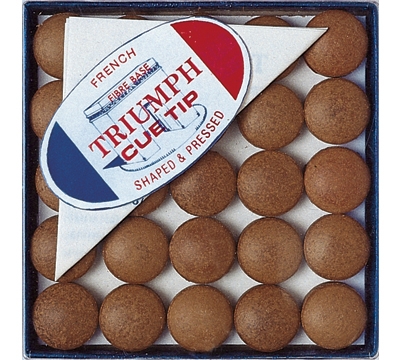
*Triumph Tips: Are specially treated with vegetable tanned oak leather. They are created from the thickest part of each hide, the outcome is a coarse grain and are recognized as a medium-hard tip.
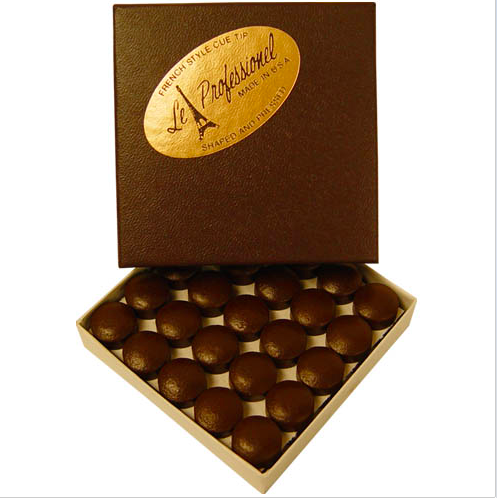
*Le-Pro Tips: They go through an extensive tanning process. The are specially treated with vegetable tanned oak leather and coated with a protective layer that seals and preserves the leather. Le-Pro tips are rated hard on the density scale.
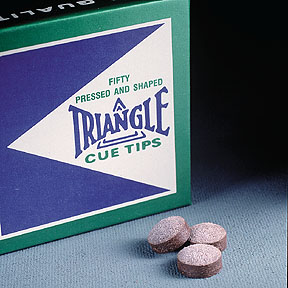
*Triangle Tips: Are chrome-tanned leather, then pressed to create a thick firm pool cue tip with coarse grain. Triangle tips are rated hard on the density scale.
Layered Leather Tips
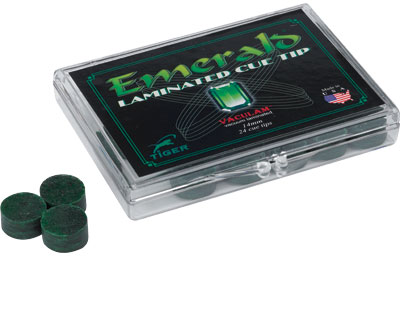
*Emerald Tips: Are made from recycled pig leather splits, layered and go through a vacuum laminated process with water based adhesive for maximum durability. They are very popular and known to be the most economic and environmentally friendly laminated cue tips on the market today. Emerald tips are rated medium on the density scale.
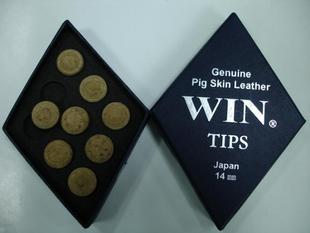
Win Tips: Are genuine pig skin leather, laminated, medium hard tips.
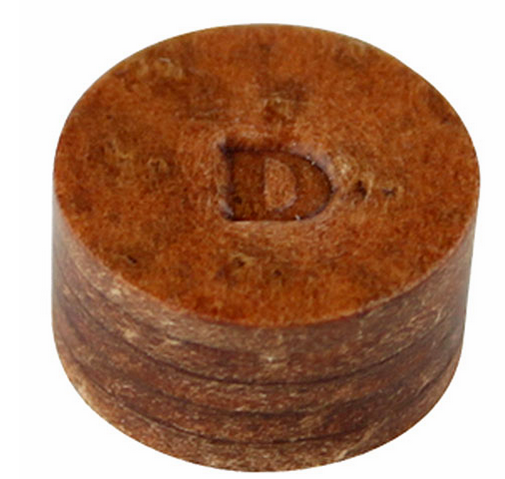
*Pig Tips: Manufactured by Tiger Products, this medium hard multi-layer cue tip made out of five layers of pig leather treated naturally. Laminated for quality and durability.
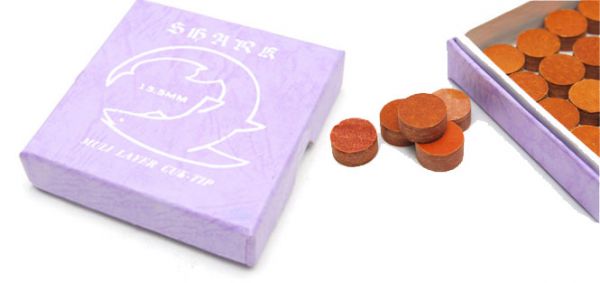
Shark Tips: Are not made out of shark skin they are in fact made out of 5 layers of premium leather, are laminated, medium tips.
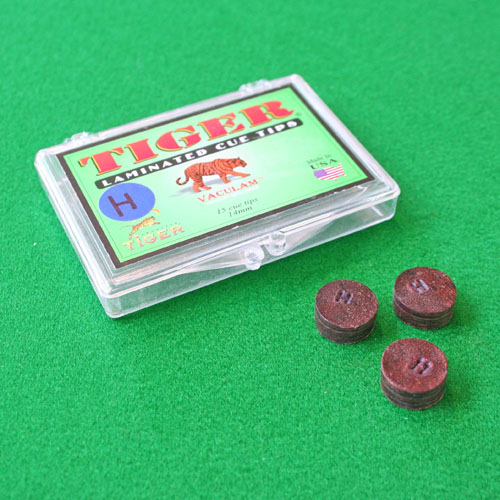
*Tiger Tips: Are made from 11 layers of 2 types of treated pig skin using the natural characteristics of the leather to achieve better consistency and control. Tiger tips are rated hard on the density scale.

*Everest Tips: Made from the finest pig skin, each of the 10 layer is carefully chosen and laminated. This tip shapes liked a hard tip, but hits like a medium tip and has control of a soft tip. It’s truly a multi-purpose cue tip.
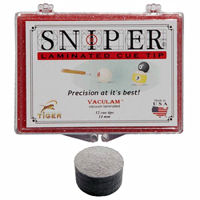
*Sniper Tips: Tiger Sniper cue tips are laminated and made from under ground tanned boar hide. Treated slowly and without any chemical, each hide takes a year average to tan completely.
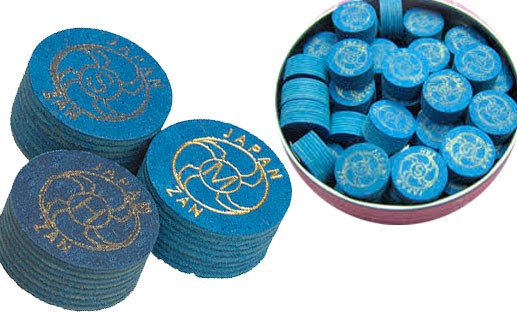
Zan Tips: Are high quality laminated leather composed of eight or nine layers of pig and hog leather. Depending on the hardness chosen different leathers are used, giving Zan tips the right stiffness and fluidity. These cue tips are designed to hold chalk exceptionally well. Zan has a premiere series: soft (9 layers), hybrid max (8 layers), and grip hard (9 layers). Standard Series: Zan Soft (8 layers), Zan Medium (8 layers), and Zan Hard (8 layers).
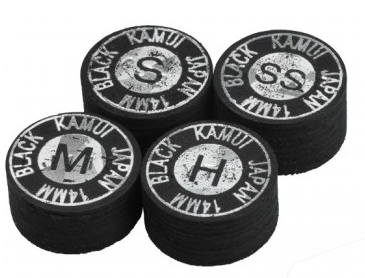
Kamui Tips: have become some of the most popular cue tips among pro-players all over the world. These cue tips are imported from Japan and are 100% Japanese pig leather. The tips go through a rigorous moisture proof tanning process giving them the color and making them humidity resistant. Available in super soft, soft, medium, and hard.
